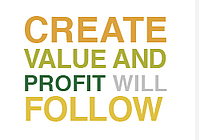 Ever since I wrote my post about Pests, Peddlers and Demand Creators, the most common question I’m asked is, “How can you tell if you’re being a Peddler or Commoditizer?”
Ever since I wrote my post about Pests, Peddlers and Demand Creators, the most common question I’m asked is, “How can you tell if you’re being a Peddler or Commoditizer?”
Here’s the simplest and fastest way to determine if you’re peddling:
Look at how you approach your prospects and customers early in the sales cycle. Consider the questions you ask, the material you share and the possible presentations you make. Now answer this question: Who learns about the prospect/customer’s company?
If the answer is you (or your sales rep) you’re a peddler. If the answer is the prospect/customer then you’re positioned perfectly to break-free from The Commoditization Trap.
You read that correctly. If you want to avoid being commoditized and being treated like a Peddler, your job is to ensure your prospect/customer learns about their company, their situation, problems and opportunities from the very first interactions. Learning about your company, it's products and solutions comes last, with no exceptions.The problem so many selling organizations have is they view their first interactions as a qualifying or needs assessment process. They ask questions to educate the selling organization, and, frankly, they bore the buyer.
- Don’t ask how the company has handled a function in the past. Instead ask them how they’ve adjusted to address the problems that could be causing that function to be performing at subpar levels.
- Don’t ask them what do they like about what they’ve done in the past and what would they would change? Provoke them with your Commercial Teaching Point-of-View that will cause them to look at their solution differently.
The point here is that the bar has been raised to making high value sales. You can no longer rely on the customer to educate you on what they need. You must teach them instead. When you do that, you’re in a position to create real demand and separate yourself from your competition.

 Doug Davidoff
Doug Davidoff